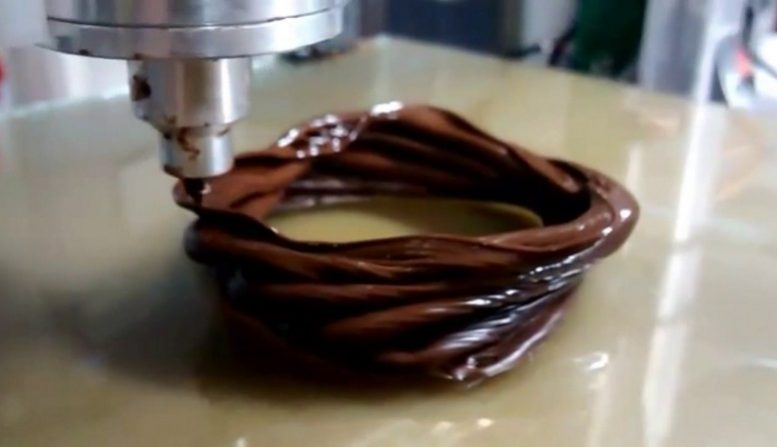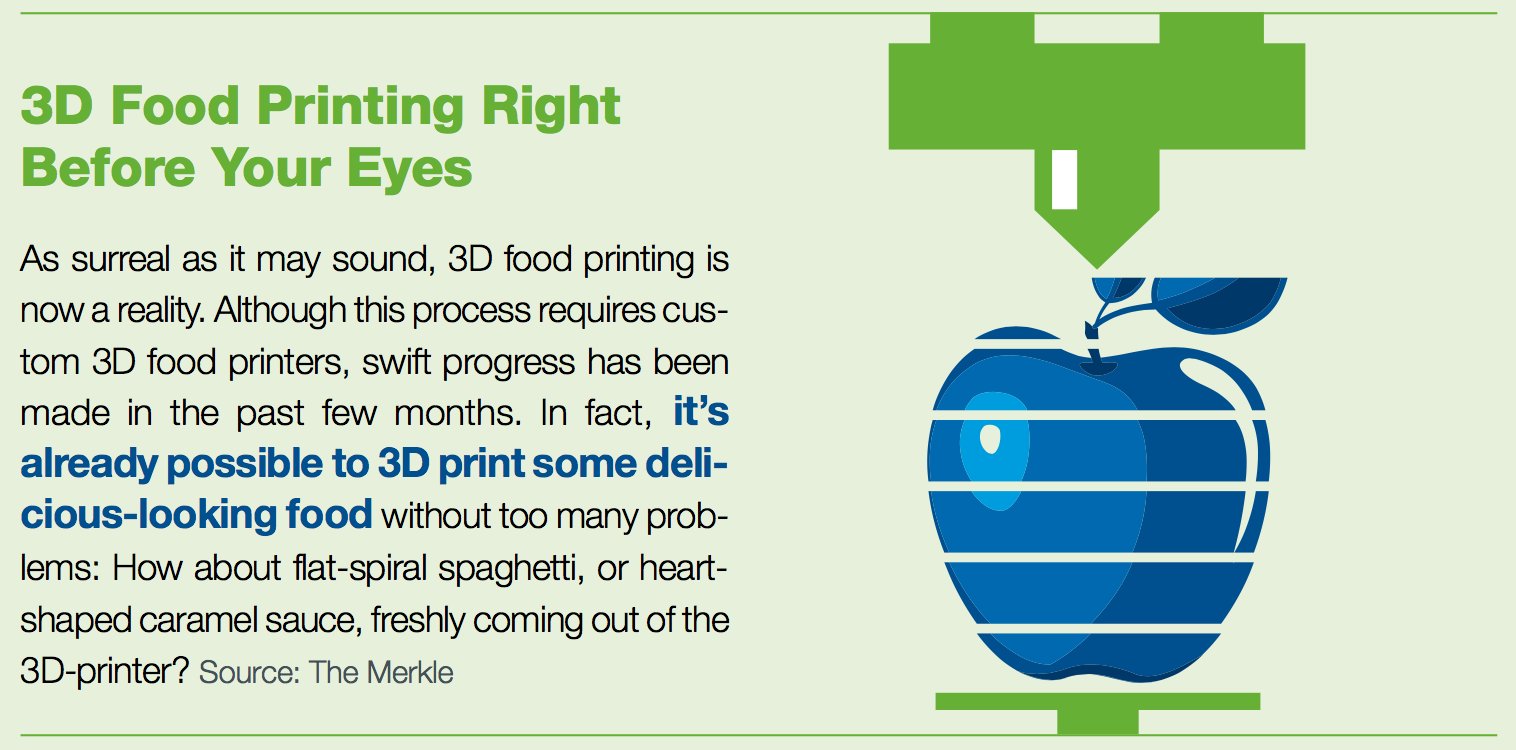Will 3D Printing Revolutionize the Food Industry?
Last Updated on February 24, 2023
Although the earliest forms of 3D printing were introduced in the late ’80’s, developments in the last three years have seen 3D printing techniques applied to the areas of food technology and production. Some industry pundits are saying that it will revolutionize food manufacturing in the next 10 to 20 years.
So what is 3D printing?
Simply put, it is the process of creating a 3D solid object using a machine that adds layers and layers of material, one on top of another. The technical term for creating a product this way is called Additive Manufacturing.
Think about how you ice a cake with an icing bag, and then imagine that you just kept adding more and more layers to the icing, as it dried, to build a 3D structure or shape of your choice. Obviously the type of material in the print cartridge would change depending on the object to be created.
In 2014, Anjan Contractor won a grant from NASA to develop a 3D printer that would allow astronauts to make pizzas in space. The ingredients in the printer cartridge lasts 30 years and the pizza the printer produces takes about a minute and a half to cook. Check out Contractor’s YouTube feed to watch the demo. The U.S. Military is also researching the use of 3D food printing to feed soldiers on the battlefield.
More recently the price of 3D printers has declined rapidly to below US$1000, making the technology more accessible to consumers and manufacturers. Now the range of food products that can be manufactured this way has evolved from pizzas to burgers, cookies, and pasta. A number of large food manufacturing corporations are also experimenting with 3D food printing.
Printing Chocolate
Hershey’s has developed an advanced 3D chocolate printer that it plans to use in vending machines in the future to allow consumers to personalize their chocolate snacks. Visitors to the Hershey’s Chocolate World Attraction in PA can see the chocolate printer in action. Pepsico is using 3D printing to create prototypes of new food products, including chips, so that focus groups can experience new product ideas in their actual form, rather than in a picture.
Finland’s VTT Technical Research Centre is at the forefront of 3D food printing and has just received a large grant to develop “multi-textural, technologically, economically and environmentally sustainable” 3D food printing technology. Because 3D printing cannot use traditional recipes or ingredients, their work involves identifying appropriate food combinations that are healthy, appetizing and sustainable.
Other organizations making advances in the space are more geared towards the domestic consumer. Companies like Natural Machines, have created a 3D food printer (the Foodini), which it plans to launch to consumers some time in 2017. Foodini’s FAQ emphasize the time saving aspect of their machine, as it is designed to take on the difficult and/or time-consuming parts of food preparation that often discourage people from creating homemade food. For more insight in to the various types of 3D food printers available now, including the Bocusini which is being funded by a KickStarter campaign, check out this video compiled by Tech HD.
The question still remains however, will this revolutionize the food industry? In my opinion, yes, it will.
Although I am not sure the average consumer would pay the big bucks for a new kitchen appliance that helped them make fancy ketchup patterns on their plates, serious bakers might be drawn to the wealth of cake decorating options it provides. I can also imagine, for the more well-heeled consumer, a 3D printer would be a great way to get kids interested in cooking.
Where I think the real opportunity lies is in developing edible and appealing food products from the less-than-appealing ingredients currently being touted as new forms of cheap and abundant protein to feed an ever increasing global population, things like algae, insects and new forms of plant protein.
This might be the answer to food sustainability that technology has been looking for, but then again, the idea of customizing my chocolate isn’t too bad either.
What do you think? Is this a fad, or a revolutionary concept?
Author: Juliette Prouse
Subscribe to our newsletter for details on mentorship sessions, workshops, webinars, as well as career and job fairs across Canada and the US!



leave your comment